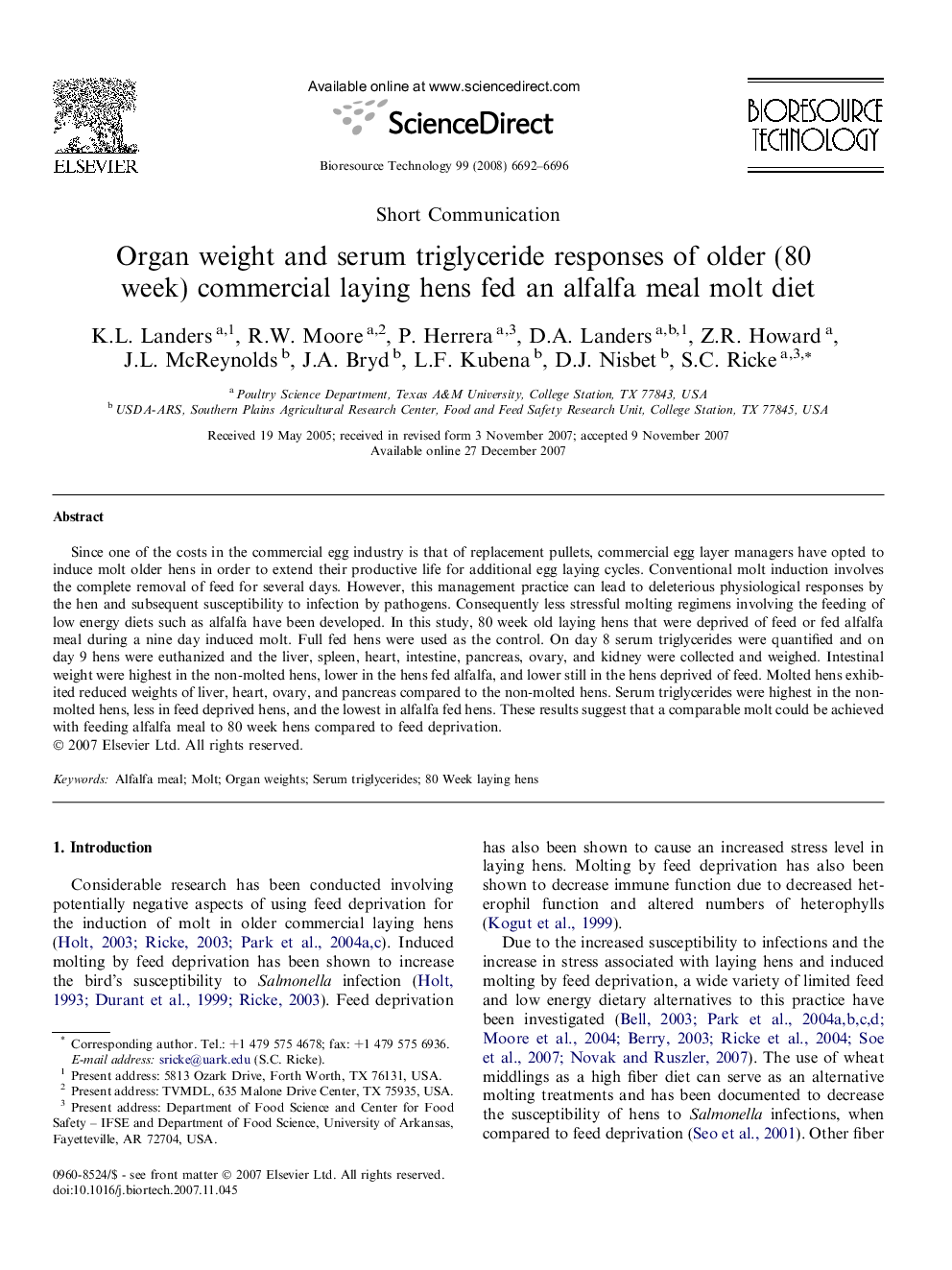| Article ID | Journal | Published Year | Pages | File Type |
|---|---|---|---|---|
| 684932 | Bioresource Technology | 2008 | 5 Pages |
Since one of the costs in the commercial egg industry is that of replacement pullets, commercial egg layer managers have opted to induce molt older hens in order to extend their productive life for additional egg laying cycles. Conventional molt induction involves the complete removal of feed for several days. However, this management practice can lead to deleterious physiological responses by the hen and subsequent susceptibility to infection by pathogens. Consequently less stressful molting regimens involving the feeding of low energy diets such as alfalfa have been developed. In this study, 80 week old laying hens that were deprived of feed or fed alfalfa meal during a nine day induced molt. Full fed hens were used as the control. On day 8 serum triglycerides were quantified and on day 9 hens were euthanized and the liver, spleen, heart, intestine, pancreas, ovary, and kidney were collected and weighed. Intestinal weight were highest in the non-molted hens, lower in the hens fed alfalfa, and lower still in the hens deprived of feed. Molted hens exhibited reduced weights of liver, heart, ovary, and pancreas compared to the non-molted hens. Serum triglycerides were highest in the non-molted hens, less in feed deprived hens, and the lowest in alfalfa fed hens. These results suggest that a comparable molt could be achieved with feeding alfalfa meal to 80 week hens compared to feed deprivation.
